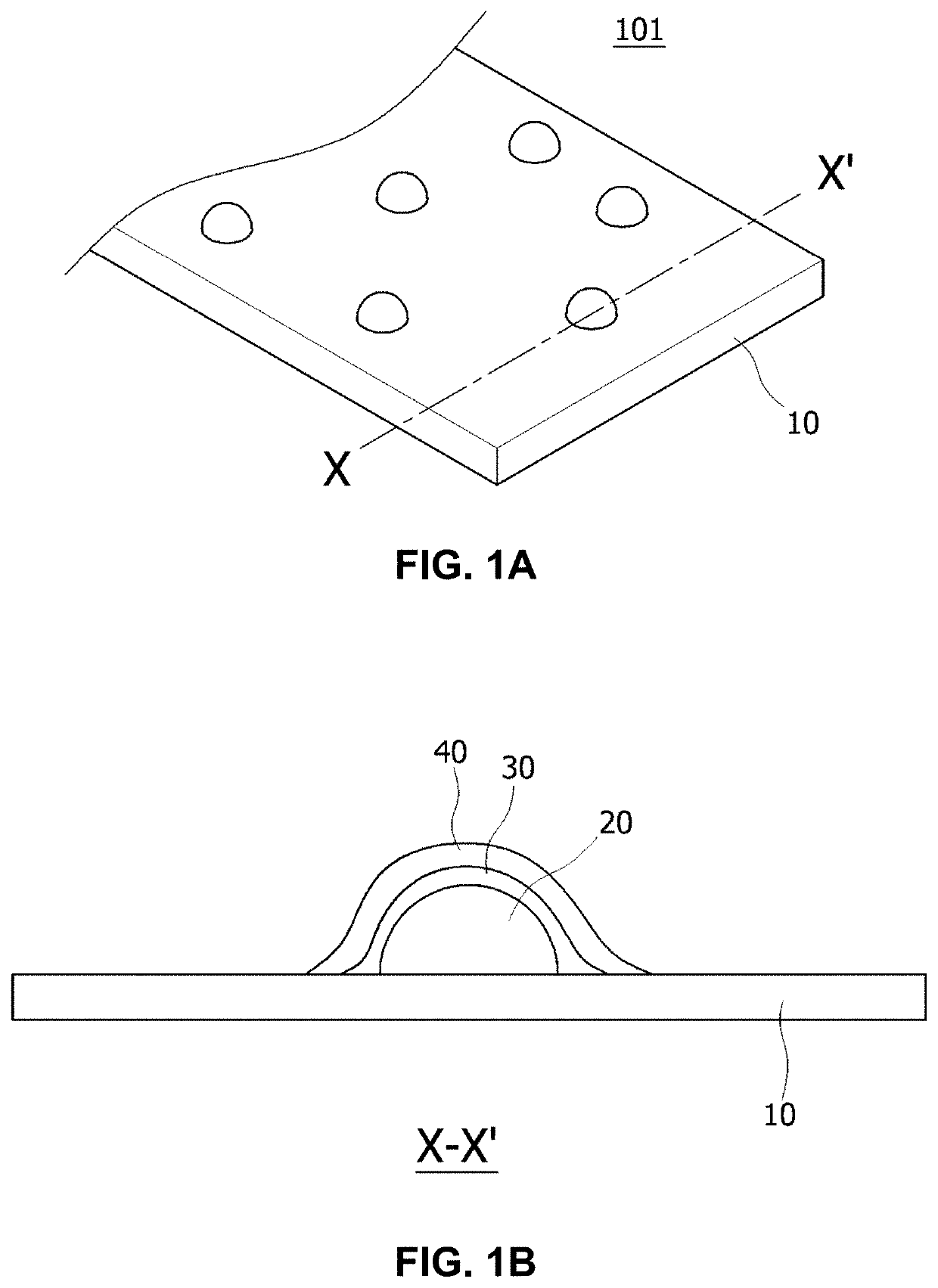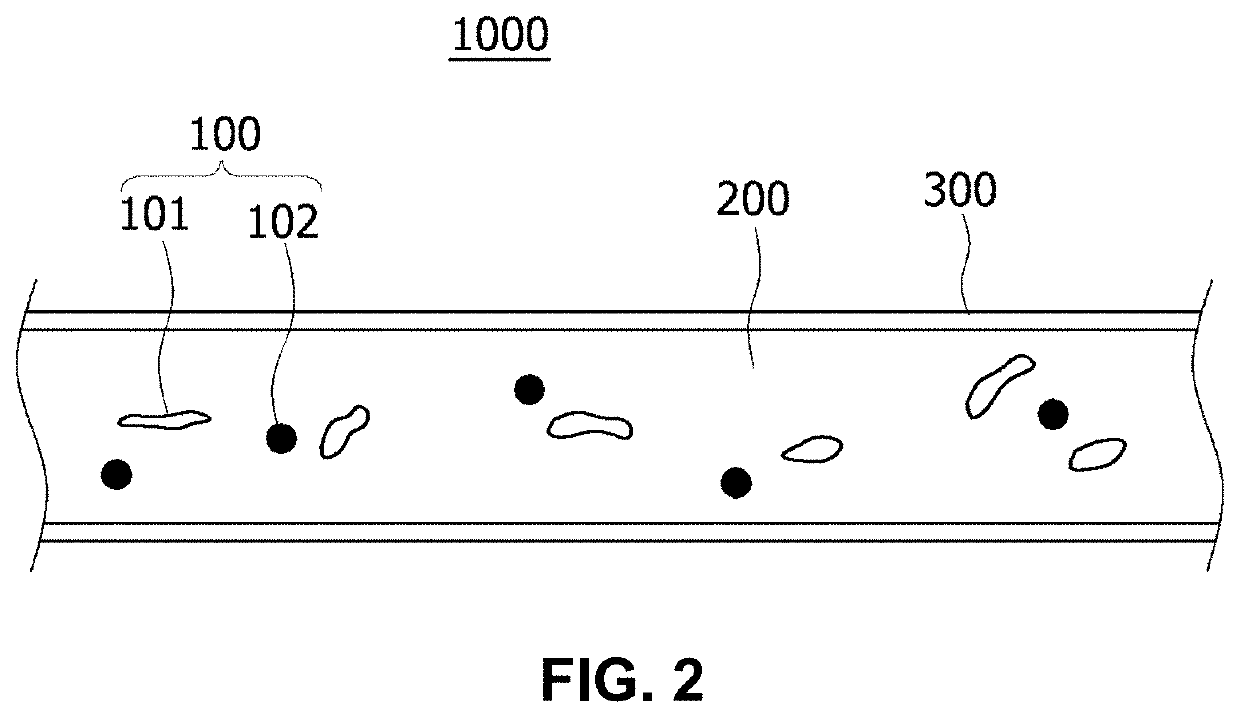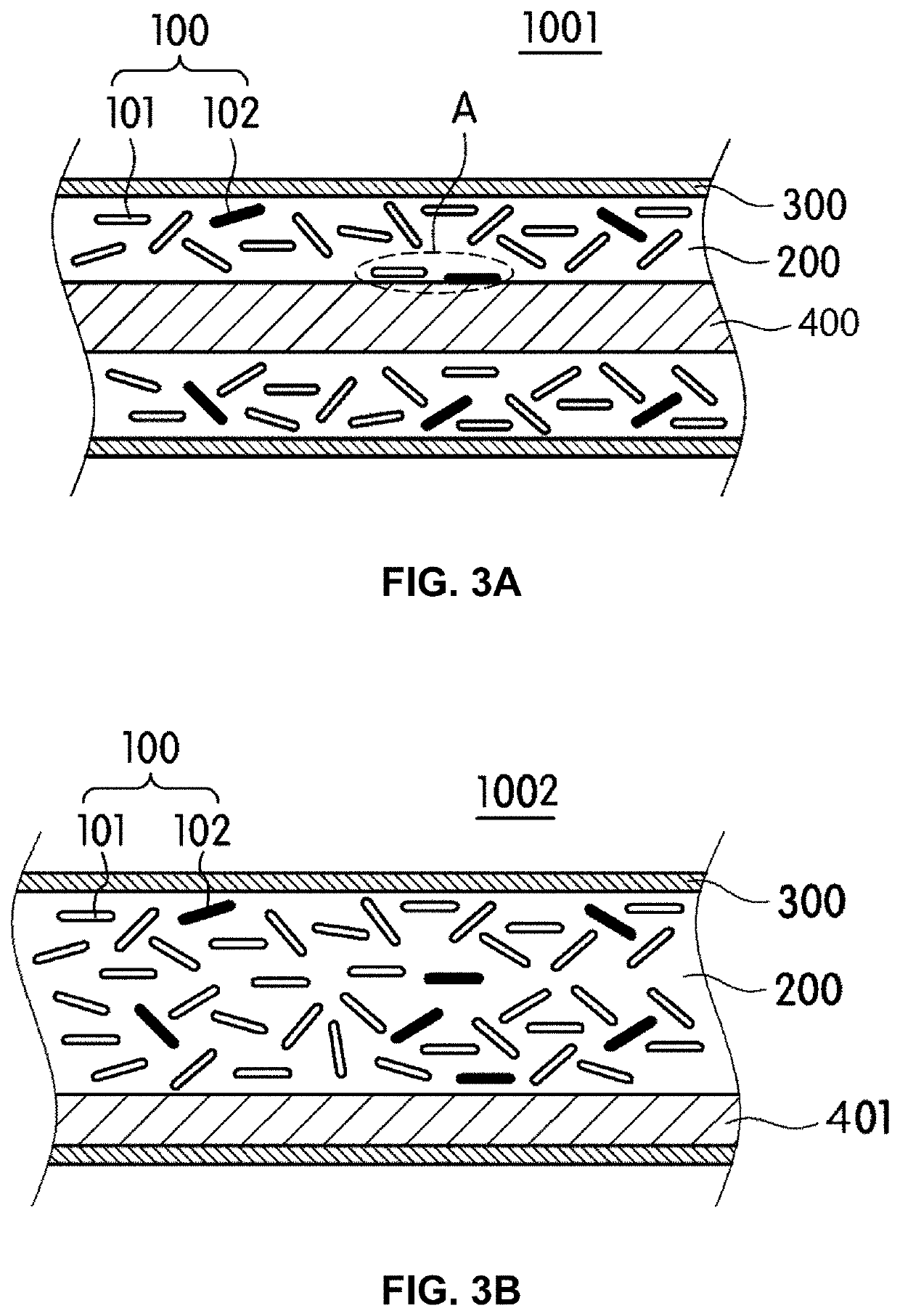Composition for producing graphite-polymer composite and graphite-polymer composite produced therethrough
a graphite-polymer composite and graphite-polymer technology, applied in the direction of cooling/ventilation/heating modification, coatings, etc., can solve the problems of reducing operating efficiency, limiting product life, heavy metal parts, etc., to improve the utilization rate improve the insulation properties of heat radiation members, and minimize the degradation of heat radiation performan
- Summary
- Abstract
- Description
- Claims
- Application Information
AI Technical Summary
Benefits of technology
Problems solved by technology
Method used
Image
Examples
preparation example
[0110]As a non-insulating filler, a graphite composite was prepared by the following method.
[0111]Specifically, a raw material powder was prepared by mixing a plate-shaped expanded graphite having an average particle diameter of 300 μm and a nickel powder at a mixing ratio of 1:19 for 10 minutes. Also, argon gas respectively flowing at 30 LPM and 50 LPM was injected as a central gas and a sheath gas into a high frequency thermal plasma apparatus. Subsequently, after generating a high temperature thermal plasma by applying 17 kW with a plasma torch power source, the degree of vacuity of the apparatus was maintained at 500 Torr before injecting the raw material powder into the apparatus, and then the prepared raw material powder was injected into a high frequency thermal plasma reactor through a spraying nozzle of a plasma generating electrode portion. Inside the high frequency thermal plasma reactor, graphite was allowed to be transferred without being damaged by the heat of plasma, ...
example 1
[0113]First, a composition for producing a graphite-polymer composite was prepared by mixing polyamide 6 as a thermoplastic polymer compound with a heat radiation filler consisting of 10 wt % of a non-insulating filler and 90 wt % of an insulating filler so that the total amount of the heat radiation filler was 100 parts by weight relative to 100 parts by weight of polyamide 6, wherein the non-insulating filler was the graphite composite prepared according to Preparation Example, and the insulating filler was boron nitride having an average particle diameter of 150 μm. Subsequently, after introducing the composition into a main hopper and a site feeder of a coaxial twin-screw extruder, the composition was melted under an extruder barrel temperature condition of 280° C., prepared into a pellet using a Strand cutting method, and then dried in a hot-air dryer to prepare a masterbatch for producing a graphite-polymer composite.
[0114]After the masterbatch was obtained and an aluminum pla...
experimental example
[0116]The following properties of the graphite-polymer composites prepared according to Examples and Comparative Examples were evaluated, and results thereof are shown in Table 1 to Table 3.
[0117]1. Measurement of in-Plane Thermal Conductivity
[0118]The in-plane thermal conductivity of the graphite-polymer composites prepared according to Examples and Comparative Examples were measured in accordance with ASTM E1461.
[0119]2. Measurement of Tensile Strength and Impact Strength
[0120]The tensile strength and impact strength of the graphite-polymer composites prepared according to Examples and Comparative Examples were measured in accordance with ASTM D638 and ASTM D256, respectively.
[0121]3. Measurement of Surface Resistance and Volume Resistance
[0122]The surface resistance and volume resistance of the graphite-polymer composites prepared according to Examples and Comparative Examples were measured in accordance with ASTM D257.
[0123]4. Measurement of Dielectric Breakdown Strength and Die...
PUM
 Login to View More
Login to View More Abstract
Description
Claims
Application Information
 Login to View More
Login to View More - R&D
- Intellectual Property
- Life Sciences
- Materials
- Tech Scout
- Unparalleled Data Quality
- Higher Quality Content
- 60% Fewer Hallucinations
Browse by: Latest US Patents, China's latest patents, Technical Efficacy Thesaurus, Application Domain, Technology Topic, Popular Technical Reports.
© 2025 PatSnap. All rights reserved.Legal|Privacy policy|Modern Slavery Act Transparency Statement|Sitemap|About US| Contact US: help@patsnap.com



